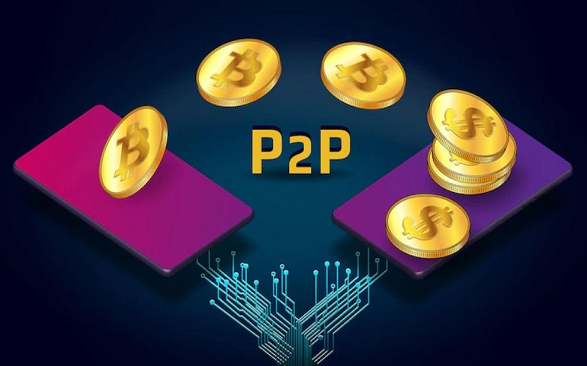The year 2022 was a grim one for crypto users, investors, and organizations alike, following a series of unprecedented negative outcomes. The year saw the collapse of many popular cryptocurrency companies and blockchain projects, including Do Kwon’s Terra (formerly called LUNA), BlockFi, Three Arrows Capital (3AC), Celsius Network, Voyager Digital, and on the top of the crop, Sam Bankman-Fried’s FTX.
The FTX implosion became the pinnacle of crypto project crashes in the year 2022, leading to many answered and unanswered questions. Did you know that according to official reports, the crash incurred a total loss of around $9 billion? Crazy numbers, right?
Not only did the then-second-largest crypto exchange FTX Trading Limited crumble in November, its ecosystem token represented by the ticker FTT plummeted massively, leaving many investors wrecked. But what’s the fate of FTX and the FTX token? Will FTT ever rise again? In this article, we will look into what happened at FTX and if there’s any positive outlook for the FTT token. Stick around to find out (more) about the FTX saga.
How FTX Rose to Stardom
FTX is a cryptocurrency exchange founded in 2019 by Sam Bankman-Fried, Gary Wang, and a group of professionals with backgrounds in finance, trading, and technology. In a short space of time, the exchange built a reputation for offering a wide range of innovative products and services, including futures, options, and leveraged tokens. FTX attracted a large and growing user base. But what factors led to FTX’s success?
One of the key factors in FTX’s success was its focus on serving the needs of professional traders and institutions. The exchange invested heavily in developing the infrastructure and technology needed to support high-volume, high-frequency trading. FTX formed early partnerships with Binance and Coinbase and other major financial institutions and market makers. This allowed FTX to offer low latency and high liquidity, which is vital for traders who need to execute trades quickly and efficiently.
Another factor that contributed to FTX’s growth was its early investment in the development of the FTX platform. FTX had a user-friendly interface and a wide range of products, including futures and options. Not surprisingly, both beginners and experienced traders took to FTX.
Also, FTX was able to attract investments from various institutions, including venture capitalists (VCs) who were interested in profiting from what was considered fast-growing alternative finance.
By the way, Sam Bankman-Fried, rightly or wrongly, had a reputation as a savvy trader and investor out of Wall Street who knew what he must be doing. Traders took to his personality, and naturally, his trading platform, FTX.
But in a matter of weeks, FTX crashed in a way no one in the crypto space ever imagined. What led to its downfall? How did FTX crash?
How Did FTX Crash?
So you don’t get bored with all the small nitty-gritty, let’s go straight to the point.
It all started on 22 November 2022 when a CoinDesk report indicated that there were close ties between FTX Trading Limited and Alameda Research, a crypto hedge fund founded by beleaguered Sam Bankman-Fried. This report created a Twitter feud between Sam Bankman-Fried and Binance CEO Changpeng Zhao.
Consequently, Binance decided to offload its FTT bag as an exit strategy. “As part of Binance’s exit from FTX equity last year, Binance received roughly 2.1 billion USD equivalent in cash (BUSD and FTT). Due to recent revelations that have come to light, we have decided to liquidate any remaining FTT on our books,” CZ Binance wrote. In a response tweet, Alameda Research showed interest in buying Binance’s FTT holdings at an average price of $22.
These statements from the Binance Chief and Alameda Research caused panic and consequently prompted many FTT holders to liquidate their assets, creating a colossal coin sell-off. It resulted in a bank run. Data showed that roughly $6 billion were withdrawn from FTX in less than three days, in the heat of the event. FTX could not withstand it.
Subsequently, Binance proposed buying FTX to protect users and investors. Unfortunately (or fortunately), this did not play out, leading to a series of events that finally culminated in FTX declaring itself bankrupt amidst desperate moves to find liquidity for survival. Later, the exchange halted withdrawals to stop users from sending out funds from the platform and later filed for Chapter 11 bankruptcy.
The real question is, why did FTX lose so much money in no time?
FTT, FTX’s issued token, is at the center of what led to the cryptocurrency exchange losing so much money in no time. Alameda Research owned a large amount of FTT. By June 2022, Alameda Research had listed $3.66 billion of “unlocked FTT” and $2.16 billion of “FTT collateral” as assets on its balance sheet. In the same vein, the same FTT is used as collateral for loans taken out by Alameda Research. This put Alameda Research in an undue position where it could easily create a high valuation while relying on the locked tokens in its balance sheet for loans. Imagine being able to ‘print money’ and then use this to get real money. It was paper, not real value. So when the loans are called, the result will be nothing but a collapse.
Alameda Research had been borrowing billions in customer funds (real money) from its parent company, FTX Trading Limited, in exchange for FTT (printed money). So when CZ’s tweet triggered an over $6 billion bank run on FTX, there was no way FTX could have been able to stay solvent. Regulators mandate that trading platforms hold enough reserve to match what customers deposit. FTX did not have nearly enough at hand.
How bad is it to trade with customer funds? There are so many reasons why it is not advised for trading companies to trade with customer funds. One major reason is the risk of mishandling. Trading client funds increases the risk of misuse or misappropriation of those funds. When trading firms are not transparent about how they use client funds or do not have proper controls and oversight, there is a risk of funds being misapplied.
Thus, it’s best practice for crypto trading platforms to keep separate accounts for client funds and company funds to avoid potential conflicts of interest or regulatory issues. This notion gave birth to the proof-of-reserve (PoR) concept.
Source: Pixabay
What’s the Future of FTT?
FTX Token, FTT, is a token issued by the cryptocurrency exchange FTX. It is an ERC-20 token built on the Ethereum blockchain and it was designed to be used as a utility token within the exchange ecosystem. One of the main purposes of FTT was to give holders access to certain benefits within the exchange, including reduced trading fees and voting rights for certain decisions related to the operation of the exchange.
FTT was so successful that it reached an all-time high of $85.02 on 9 September 2021. As a result of the FTX collapse, the coin clinched an all-time low of $0.8245 on 1 January 2023, according to Coinmarketcap data. In September 2021, the token reached an all-time high market cap of $9,756,571,324. With the recent events, FTT drastically dropped to a current market cap of $0.00.
Without a doubt, investors have lost trust in FTT after the collapse of FTX in November 2022 which led to the arrest of Sam Bankman-Fried with legal suits and woes piled up against him. Right now, no one can say exactly what FTT will be in the future. But in a situation where the exchange revitalizes and use cases are created for the token, FTT could likely see interest from the crypto community.
Altogether, whether FTT will rally in the future or not is something that will eventually be seen. At the time of writing, the token is struggling at $1.30 per coin.
Bottomline
Use cases, good community strength, and a trusted team are some of the conditions for a crypto asset to excel. Where these and other factors are missing, such a token is as good as a shitcoin. This is the case of FTT.
The token was among the top crypto assets by market capitalization when it had many utilities as the FTX ecosystem thrived. But the recent issues surrounding FTX and Sam Bankman-Fried have led to the abandonment of the token by many investors.
On the whole, the FTX incident clearly shows that crypto investments are highly risky. Therefore, it is recommended to diversify one’s investment portfolio and apply proper risk management when trading or investing in digital assets.
Credit: Ndianabasi Tom
A crypto journalist and content writer who has been talking about cryptocurrency and blockchain technology since 2018, Ndianabasi is a Writer at Crypto Asset Buyer (CAB).
Featured image credit: https://www.freepik.com
Discover more from Crypto Asset Buyer
Subscribe to get the latest posts sent to your email.




